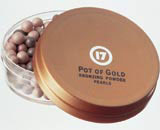Total eclipse of the sun
Why sweat in the sun when you can get a tan out of a tube? Self-tan devotee Clare Dowdy looks at branding in the bronzing trade

For some people, sporting a year-round tan these days is as necessary as breathing, and if you’re not actually a resident of some sunny clime, that takes effort. Who can be bothered with perspiring on a sunbed, Breville sandwich-style, every week? Much better to reach for the bottle.
In times gone by, it was called fake tan, and it carried a certain social stigma. Only the hopelessly pallid and untravelled would resort to such stuff. And product performance didn’t help matters. Invariably difficult to apply, you were likely to end up with a terracotta zebra effect running down your calves.
Since then, image and product have improved considerably. Fake tan became socially acceptable when the message eventually got through about the cancerous effect of too much sun. And its image got a welcome boost through The Body Shop’s Fake it campaign a few years ago. Product performance, too, progressed from a vivid orange to a range of more natural tones.
This is the point when the moniker ‘fake tan’ got dropped for the more subtle ‘self-tan’. And everyone’s got a self-tan product on shelf, it seems. The higher end skin care and cosmetics companies got there first – Clarins, Lancôme, Estée Lauder and their peers. Now cosmetics brands like Rimmel and Nos 7 and 17 have followed suit, along with Nivea and the sun cream brands themselves, Piz Buin, Hawaiian Tropic and Ambre Solair. And like The Body Shop and Boots the Chemists, there’s also a Superdrug own-brand version.
In-store, they sit alongside their factored rivals, or friends, depending on your view – and are generally found in the holiday section, next to the insect repellent and the hair removal unctions. This is not a location that readily conjures up images of beauty and aspiration.
In fact, many of the products are so closely aligned in appearance to the sun creams on display that it is hard to tell them apart. Both these products now come in an ever-growing number of formats – creams, sprays, mousses, milks, towels – with containers that differ accordingly.
So all the work is left to the graphics to tell the story of tubes, bottles, cans and plungers. Again, the graphics tend to take their lead from the parent sun protection range, with perhaps only the pack hue and text varying slightly. This tends to err on the side of clinical, almost medical descriptors, perhaps as a way of heightening each brand’s authority in this relatively new arena. But the graphics have a lot of work to do, as they must also differentiate between the varying tans on offer. That might be Piz Buin’s Jet Bronzer, or No 7’s Quick Dry Tinted Lotion variant. Geri Halliwell’s favourite, San Tropez, is unlikely to win any prizes for its pack design, but it is the best selling product.
Despite the fact that the product itself has come on in leaps and bounds, you would not have guessed it from the colour cues. The yellows, bronzes and chocolate browns that dominate the packaging are enough to make even the most brassy Essex Girl blanch.
-
Post a comment




